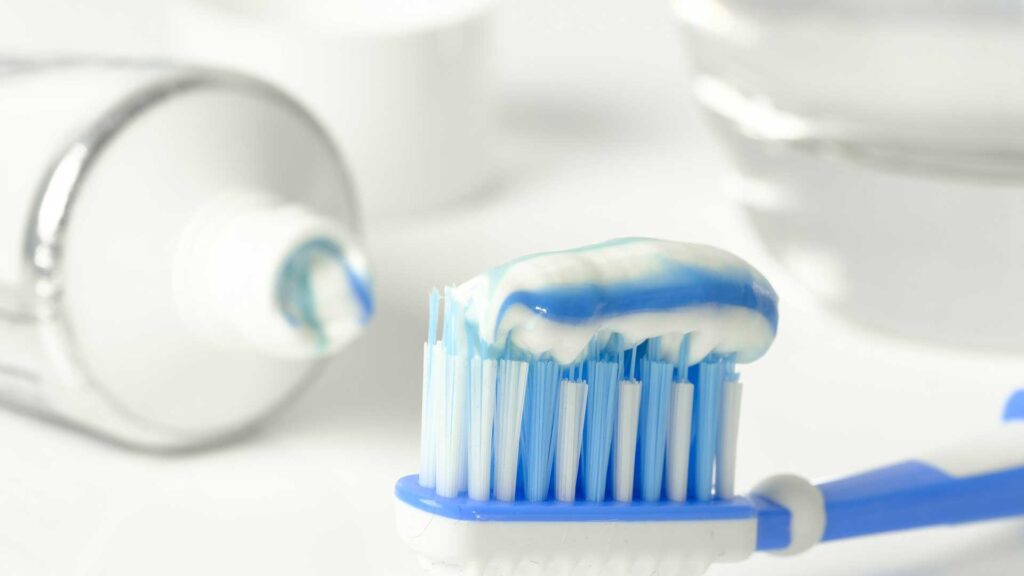A white, bright smile is something that many of us want. A Monterey, CA dentist can help you reach your goal if you are looking for professional help or advice.
Toothpaste that whitens teeth is easy to find and claims to work really well. However, do these items really live up to the hype? Let us look at what whitening toothpastes really do.
How does whitening toothpaste work?
Whitening toothpastes mostly get rid of spots on the surface of teeth. Over time, these spots can dull the natural shine of our smiles. They are often caused by everyday things like coffee, tea, red wine, and smoking.
Mild abrasives, like silica or calcium carbonate, are in these toothpastes. These gentle cleaning agents work like tiny scrubbers to get rid of the spots on the surface.
Chemicals like hydrogen peroxide or carbamide peroxide are also in some formulas. These help break down spots on the tooth surface and remove them.
The limitations of whitening toothpaste.
It is important to know that whitening toothpaste can only do so much.
- They are not able to change the color of your teeth. If your teeth are usually yellow or gray, whitening toothpaste will not make a big difference in the color they are.
- If you have deep spots, they will not work. Tooth whitening toothpastes can not get rid of deep stains that are caused by some medicines, accidents, or too much fluoride. These stains go through the tooth enamel and can not be removed.
Key ingredients in whitening toothpaste.
These toothpastes whiten teeth with the help of a few key ingredients.
- Abrasives: As we already said, abrasives are important for getting rid of surface spots.
- Chemical agents: Bleach chemicals like hydrogen peroxide and carbamide peroxide are often used to get rid of spots. These work by letting out air, which breaks up the color molecules by oxidizing them.
- Blue covarine: This blue dye is sometimes put in toothpaste to make it whiter. It tricks the eye by being different from the teeth’s yellow color, making them look cleaner.
How to choose the right whitening toothpaste.
There are so many kinds of whitening toothpaste out there that it can be hard to choose. Here are some things to think about:
- Keep an eye out for the ADA seal of acceptance: The American Dental Association (ADA) Seal of Acceptance means that the toothpaste has been tested and found to meet strict safety and efficiency standards.
- Think about how sensitive your teeth are: If your gums or teeth are sensitive, choose toothpaste that is made just for sensitive teeth. These often have softer abrasives and may have ingredients that help soothe tissues that are inflamed.
- Look at the list of ingredients: Watch out for the kind and amount of chemicals and abrasives that are there.
Use whitening toothpaste safely.
Even though whitening toothpaste is usually safe, it is important to use it the right way to avoid any problems.
- Follow the suggested directions for use: Most toothpaste say to brush your teeth twice a day for two minutes each time.
- Do not brush too much: Teeth enamel can wear down if you brush them too much.
- Talk to your dentist: For specific advice, talk to your dentist if you have any worries about using whitening toothpaste, especially if you already have cavities or gum disease.
Alternatives to whitening toothpaste.
For stronger cleaning results, think about over-the-counter whitening kits with more hydrogen or carbamide peroxide or dentist-sanctioned teeth-whitening services that use stronger cleaning products and special lights.
Whitening toothpaste can get rid of spots on the surface of your teeth and make your smile brighter, but it will not really change the color or enamel of your teeth. To do daily oral care right, you need to choose the right products, use them regularly, and talk to your doctor.



